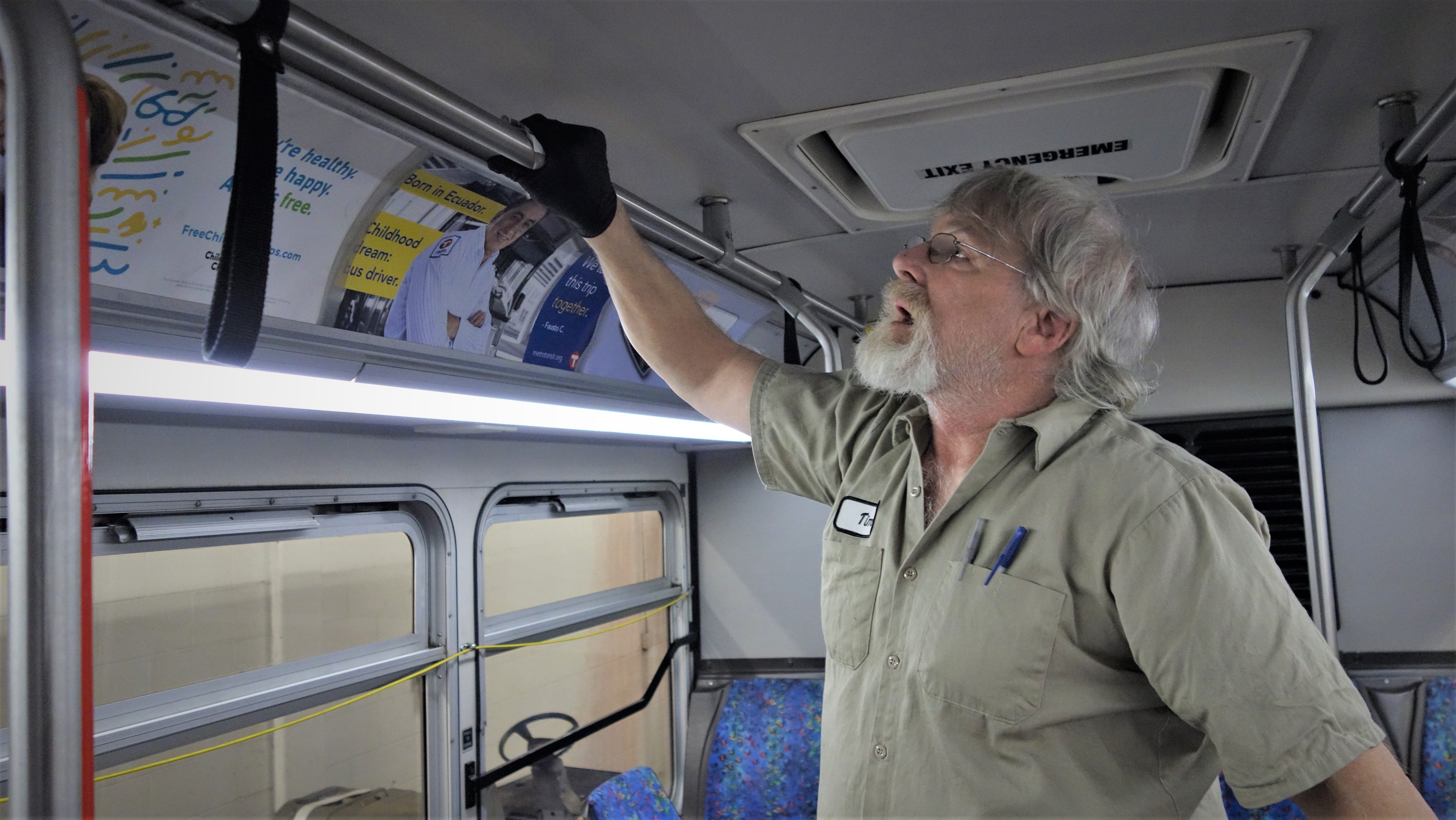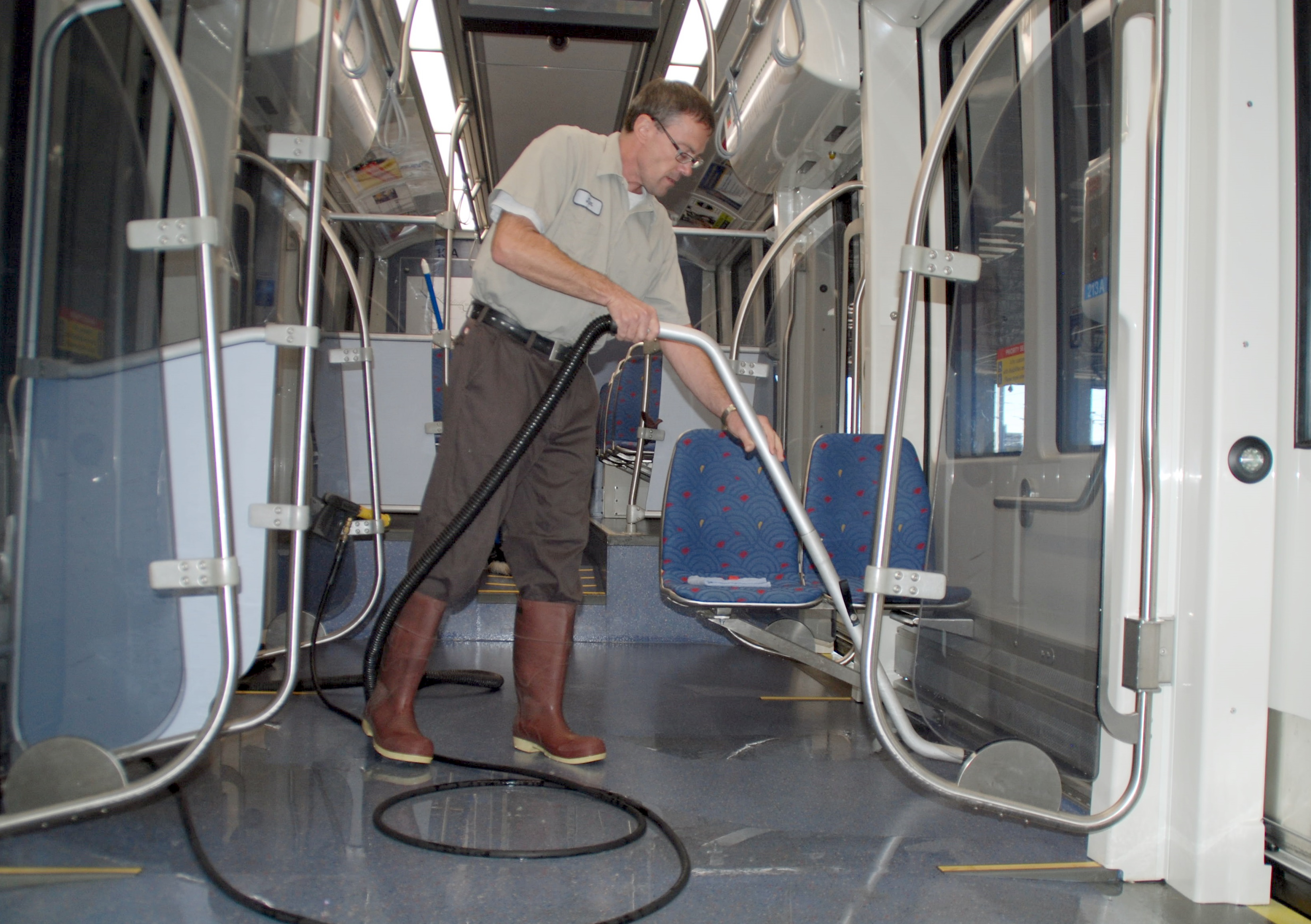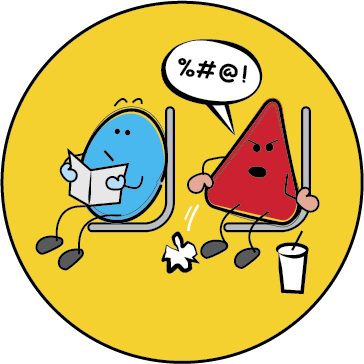
With thousands of passengers boarding each day, keeping buses and trains clean is a constant task.
In fact, Metro Transit has nearly 100 employees who devote all or part of their time to sweeping, mopping, scrubbing and otherwise tidying up the fleet of nearly 1,000 buses and 86 light-rail vehicles. Here's a brief look at how that work unfolds.
Learn more about Metro Transit's response to COVID-19
Every night, cleaners go through buses to sweep the floors and remove litter. Helpers also re-fuel the buses and put them through a high-pressure bus wash. If a bus has been vandalized or has other visible damage, those issues will also be addressed or the bus will be set aside for future repair.
Buses are scheduled for more extensive cleanings at least every 45 days. During these cleanings, the ceilings, windows, window ledges, walls and floors are wiped down with a variety of cleaning agents, such as degreaser, dish soap and hot water. Upholstered seat bottoms and backs are cleaned with a carpet extractor, and damaged seats are replaced. Magic Erasers, deodorizer and putty knifes are also among the most frequently used tools. While most of the attention is on the inside of the bus, Cleaners also wipe down the wheels and the front and back of the bus.
In most cases, it takes around three hours to clean a bus from start to finish. “I clean everywhere hands go on a bus," said Cleaner Tim Thompson, who has spent more than 30 years in Bus Maintenance.
 Like buses, trains are swept and cleaned nightly. Helpers also pull the train through a high-pressure wash, refill windshield wiper fluid, make sure the boxes that hold sand are full (sand is released as needed to help with traction) and get trains in position for their next pull-out. Helpers also clean or replace seat bottoms and backs as necessary. (Note: In 2020, Metro Transit is moving forward with plans to install plastic seats that will be easier to clean and maintain.)
Like buses, trains are swept and cleaned nightly. Helpers also pull the train through a high-pressure wash, refill windshield wiper fluid, make sure the boxes that hold sand are full (sand is released as needed to help with traction) and get trains in position for their next pull-out. Helpers also clean or replace seat bottoms and backs as necessary. (Note: In 2020, Metro Transit is moving forward with plans to install plastic seats that will be easier to clean and maintain.)
Trains are thoroughly cleaned at 6,000-mile intervals, or at least once a month. Like their peers in Bus Maintenance, Helpers wipe-down the ceiling, windows, posts and handles. A Kaivac floor cleaner is also used to get dirt, sand and other material off of the floor, a particularly important job during the winter months. It can take a single Cleaner up to eight hours to completely clean a train.
While most of the cleaning is done while trains are in storage, trains are also cleaned between trips at Target Field, the Union Depot and the Mall of America.
Wearing calf-high rubber boots, Helper Jim Johnson said he enjoyed the work and the satisfaction of keeping the fleet in top condition. “The more you keep the trains clean, the cleaner they stay,” he said.
 Help keep buses and trains clean
Help keep buses and trains clean
Customers play an important role in keeping buses, trains and boarding areas clean. Remember, Metro Transit’s Code of Conduct prohibits customers from eating on board; drinks with a sealed lid are acceptable. Customers are also encouraged to practice good hand washing, cover coughs and sneezes and properly dispose of used tissues. To report a concern, call Customer Relations at 612-373-3333.